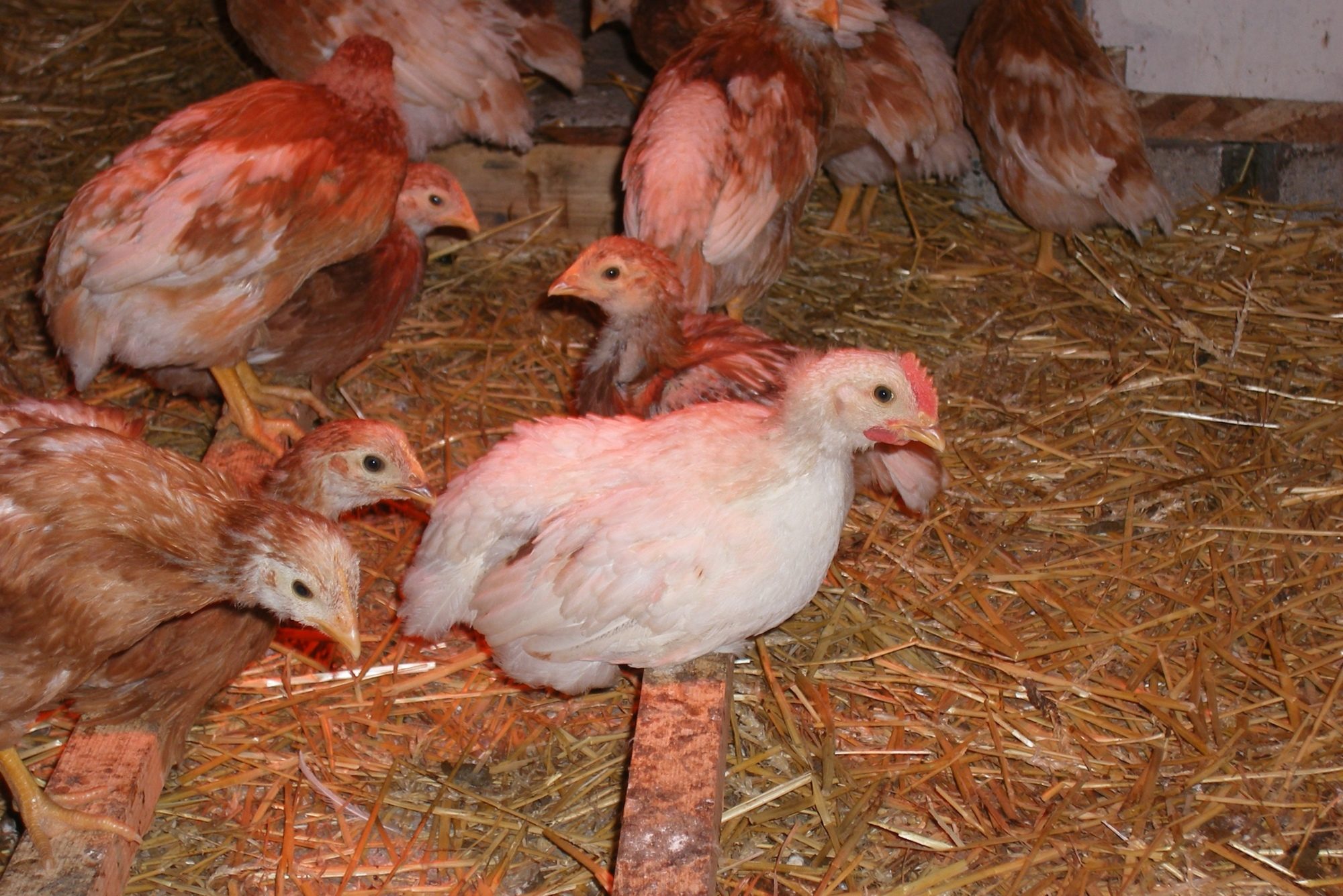Fred,
This has been an interesting thread. I've toyed with the idea of hatching second generation ISAs but haven't gone so far with that yet. I would not have expected them to come out as white as they are.
This may explain some of what I'm seeing in my Production Easter Egger work in which a third of the original hens were ISA Brown, another third White Leghorns, and the final third mixed Easter Eggers. The roosters were two white EEs of unknown provenance and one McMurray White Leghorn.
I was expecting a very mixed bag of feather color and patterning but have been surprised by how white nearly the entire flock is thus far. Except for two that presently have a vaguely bald eagle look to them the rest are overwhelmingly white. Lots of minor leakage (mostly black) coming through but overwhelmingly white. I was expecting more red/brown from the ISAs but this may explain why I'm not seeing it.
Still too early to really tell much about comb types (they hatched in mid-April) but I can already see I've got a least a couple of straight combs in there. It'll be interesting to see if those chicks show any of the common EE characteristics. I'd love to get a straight combed bird with the blue egg gene and ecstatic if it had yellow skin too. Pretty unlikely, but genetics will sometimes throw surprises.
This has been an interesting thread. I've toyed with the idea of hatching second generation ISAs but haven't gone so far with that yet. I would not have expected them to come out as white as they are.
This may explain some of what I'm seeing in my Production Easter Egger work in which a third of the original hens were ISA Brown, another third White Leghorns, and the final third mixed Easter Eggers. The roosters were two white EEs of unknown provenance and one McMurray White Leghorn.
I was expecting a very mixed bag of feather color and patterning but have been surprised by how white nearly the entire flock is thus far. Except for two that presently have a vaguely bald eagle look to them the rest are overwhelmingly white. Lots of minor leakage (mostly black) coming through but overwhelmingly white. I was expecting more red/brown from the ISAs but this may explain why I'm not seeing it.
Still too early to really tell much about comb types (they hatched in mid-April) but I can already see I've got a least a couple of straight combs in there. It'll be interesting to see if those chicks show any of the common EE characteristics. I'd love to get a straight combed bird with the blue egg gene and ecstatic if it had yellow skin too. Pretty unlikely, but genetics will sometimes throw surprises.











